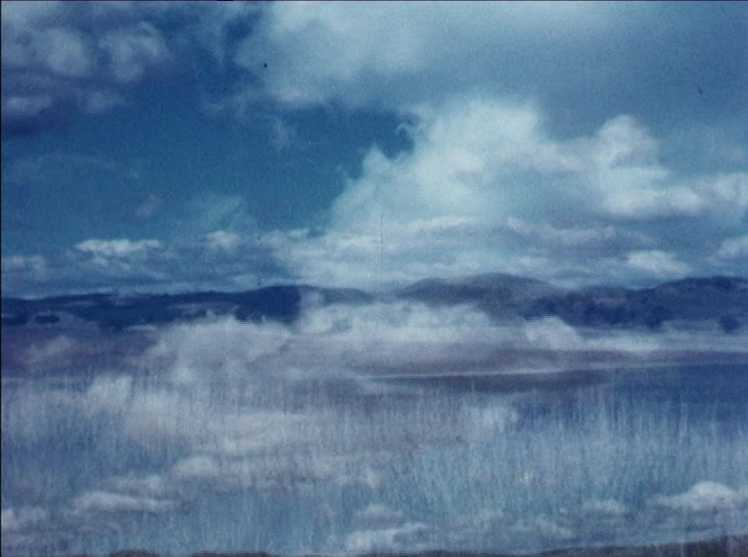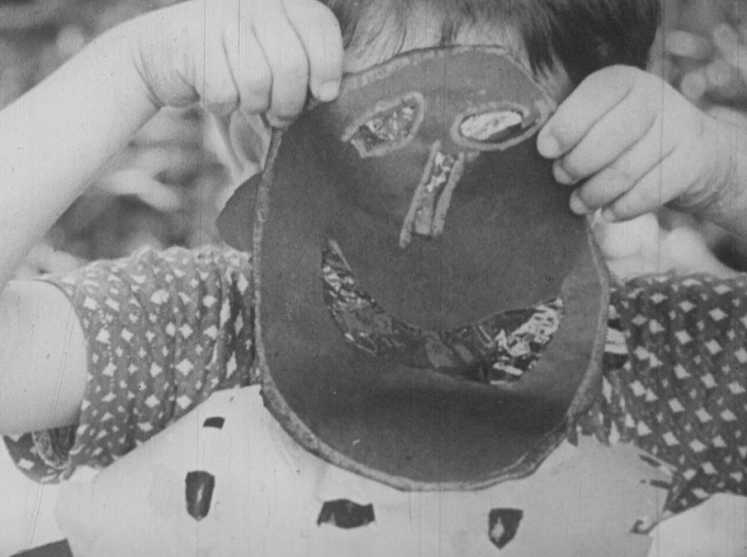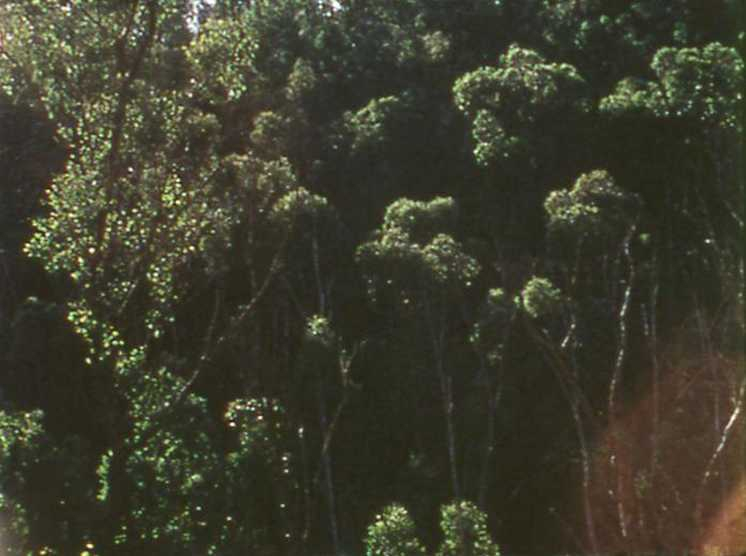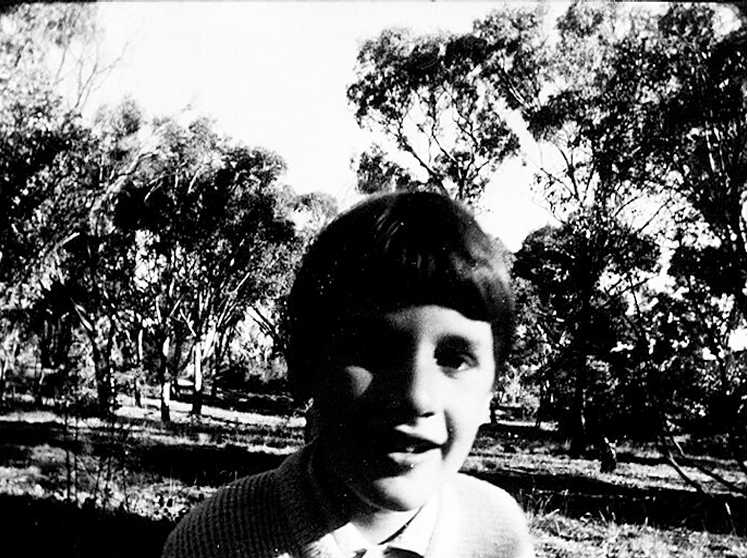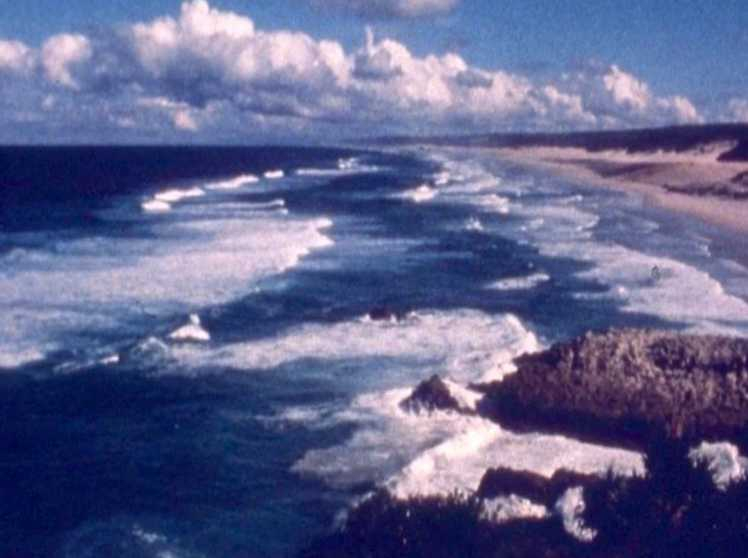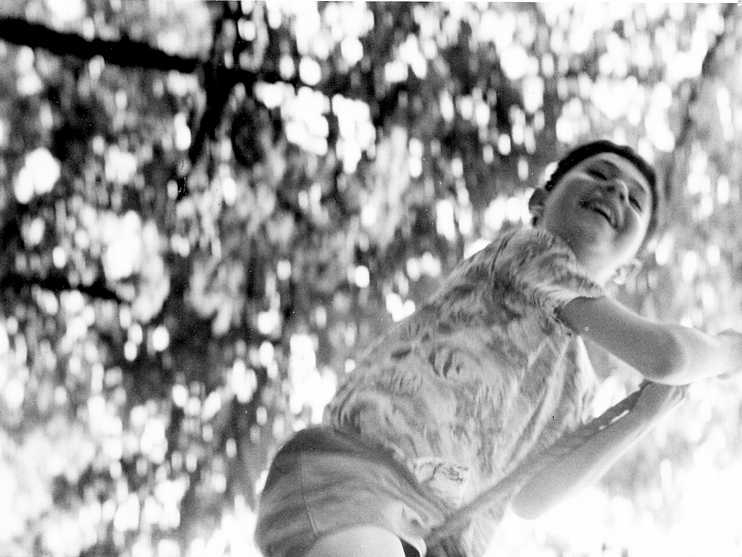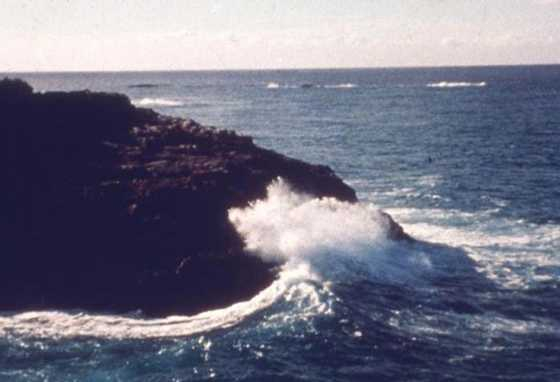Programme
PART I
INTRODUCTION
Audrey Lam and Keegan O’Connor
MAKING WINDOW PICTURES
1960 | 16mm | b&w | sound | 12'00
In the Brisbane Creative Leisure Centre, conducted by the Cantrills, children are shown reproductions of stained glass windows and then make large transparent pictures with black paper, colored cellophane, and other materials such as discarded x-ray pictures and textured fabric, with a minimum of instruction. These are taken indoors and fastened to window panes. Smaller children make faces out of the same materials, and add bodies cut out of paper, before attaching them to the limbs of a tree, where they flutter in the wind.
ADVENTURE PLAYGROUND, LONDON
1966 | 16mm | b&w | sound | 6'40
A film about recreation and learning, made during the Cantrills’ four-year residence in London, similarly tinctured by Herbert Read’s notions about children’s education as self-directed, creative, and free. The adventure playground, where activities are built around tall forest trees, provides a space in which children can shape and reimagine the environment according to their own sense of play. A non-narrative film blending music and playground noises in its soundtrack.
HOME MOVIE - A DAY IN THE BUSH
1969 | 16mm | color/b&w | sound | 4'00
This film is made up of repetitions of movements - within the frame, moving away from the frame, or facing the camera - punctuated by a 360° panoramic shot. Home Movie explores a given space, even as it makes reference to diary film in its use of repetition. By continually crossing the field of vision, the two characters reinforce the sense of its depth. At the beginning, they are simply two points within a wide shot, while at the end one of their faces occupies the entire frame.
AT ELTHAM - A METAPHOR ON DEATH
1973-74 | 16mm | color | sound | 24'00
This film was shot at Eltham, Victoria, and it is a study of two classic Australian bush views: the river seen through gum trees and the hills covered uniformly in Eucalypts. It is a film of stillness: it evokes the sense that one has in the bush of responding to a slower more natural life rhythm.
On a formal level the film is an investigation of the possibilities of manually playing the mechanical functions of the Bolex camera: the fade mechanism, the focus and the lens aperture in order to change the light, color and definition of the landscape. Through a broken, irregular series of glimpses of a heavily timbered landscape, seen through varying degrees of light intensity as the camera shutter is opened and closed, the film presents a lyrical assembly of light and dark, of brilliant sunshine and heavy shadows. The natural rhythms of time, in the divisions between day and night, are broken, condensed and rearranged by the camera. Throughout this process, our perception of the landscape alters radically as the volume of light received by our eyes is manipulated.
PART II
EARTH MESSAGE
1970 | 16mm | color | sound | 23'00
Earth Message reflect on the Australian bush filmed in the winter around the inland mountains and hills near Canberra. With the accumulation of carefully layered images and choreographed camera movement, the film is the Cantrill's personal response upon returning to the Australian landscape after four year in London. The soundtrack consists of Aboriginal music from the Northern Territory.
OCEAN AT POINT LOOKOUT
1976-77 | 16mm | color | sound | 46'00
During our final visit to Stradbroke Island, Queensland where we had filmed in the early sixties, we were appalled at the impact of laissez-faire tourism on the landscape (terrorism against nature) and the sand mining in the dunes. We directed the camera it to sea and kept it there.
Ocean at Point Lookout begins with single frame frozen moments of the ocean surface building up to full ocean movement, a suggestion of the evolution of the ocean from 'atoms' of light. Several strategies are then used which are explored in the following films including the use of long expanses of image and soundtrack durations, the manipulation of the relationship between a particular image and sound, or silence, 'testing' the sounds against an image and playing with the expectations that a viewer brings to a film, in this regard. Moods of the sea, storms, calm days, sunsets, night, are related to the changing image quality, achieved by shooting on a variety of film stocks. Given scenes are viewed through three standard camera lenses to observe the different information contributed by each lens. The camera repeatedly returns to the horizon as a constant element in the changing conditions of weather and light.
